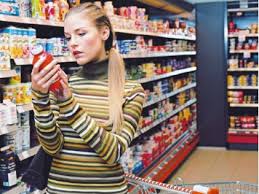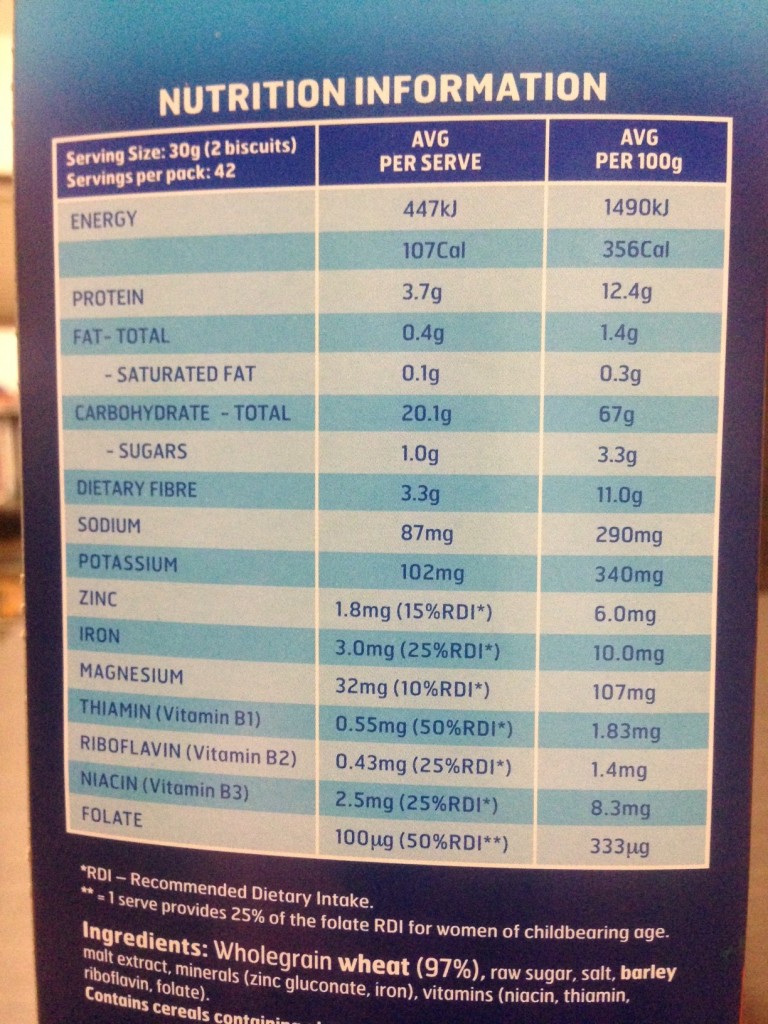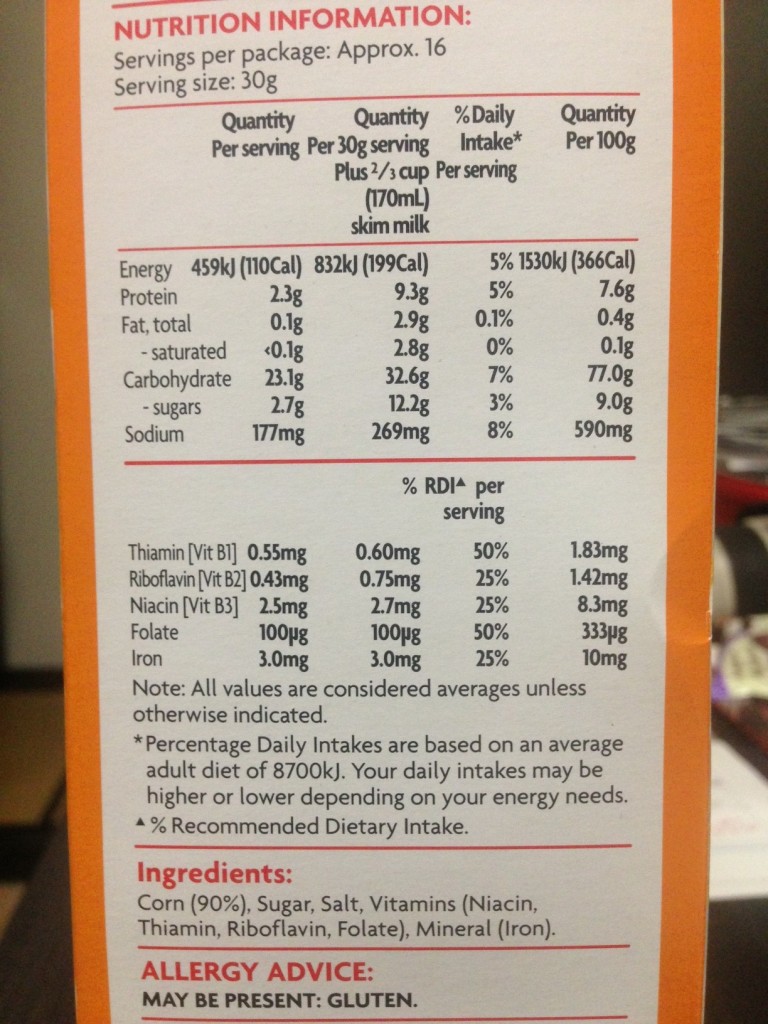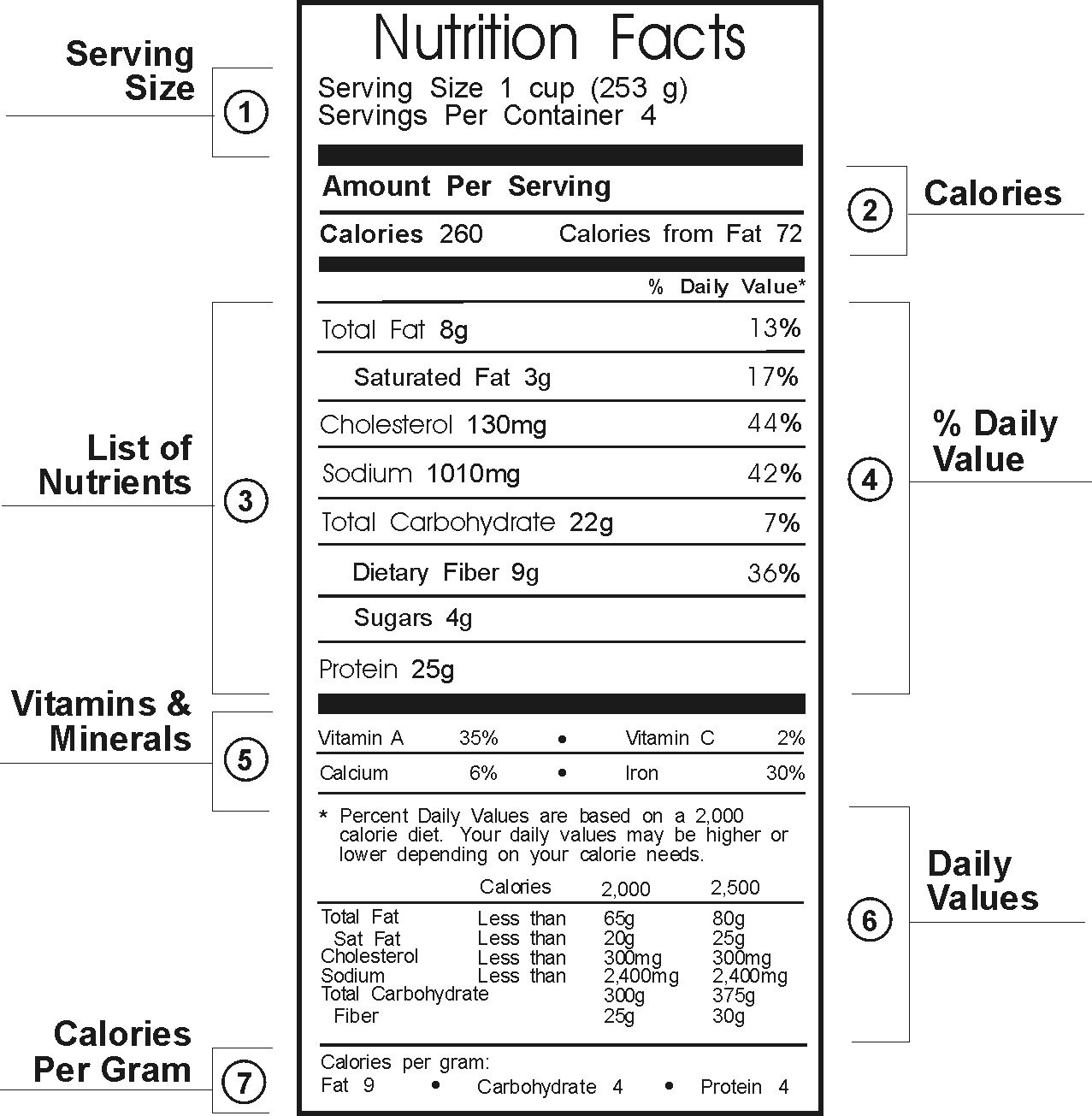- Read the Ingredients.
- Sugar, Sucrose, Honey, High Fructose Corn Syrup (HFCS) are at least 50% Fructose.
- Aim for less than 2% sugar – less than 2 grams / 100 grams or mls.
- The less sugar the better. Compare brands.
- Dairy product ‘sugar’ is safe. It is generally Galactose and has no Fructose. Beware flavourings and fruit yoghurts which have added sugar.
- Avoid products with Vegetable oil, Canola oil, Sunflower oil and no Margarine.
- Better to have Olive or Coconut Oil, Butter and Lard
- Look at the Polyunsaturated Oil component and minimise it
Limit your Fructose intake to less than 10 grams per day.
1 teaspoon sugar weighs 4 grams => 2 grams fructose.
If a product states it has 10 grams sugar per 100 grams food then that is 5 grams of fructose.
Start calculating.
IDEAS
The science and reasoning behind Recommended Dietary Intake amounts is questionable. Some of the numbers are arbitrary and all must vary by age, body size, activity level and sex. I believe the recommended daily intakes are flawed in their makeup and uninterpretable on a day to day basis. I know of no one that actually works these figures out when they shop let alone eat.
I believe we will see the development and advertising of Fructose Free foods and advertising in the near future.
USA food labeling is worse than Australia’s. It does not give any chance of easily working out a percentage component of sugar within food. Even though the Australian labelling has a lot to improve the U.S. is a long way behind.
MORE INFORMATION
I want to know 3 things when I look at a label.
1. The sugar content. The Fructose amount is half of the sugar content.
2. The percentage of sugar (grams per 100 grams) and aim for foods less than 2 – 4%.
3. The ingredients and looking at the type of oils.
I am partly interested in the Energy component but the rest including the fat and even the salt content are less important.
The rest of the information is hard to interpret and 99% of us will never work it out let alone understand the RDI (Recommended Dietary Intake) system.
The Weet Bix is 3.3 grams per 100 grams, therefore 3.3% sugar and has raw sugar in the ingredients. Look at Vita Brits as an alternative at 0.4% sugar.
One serving (2 biscuits) is 1 g of sugar, so about 0.5 grams of Fructose. If you went with Vita Brits then you are down to about 0.1 grams of Fructose. Both however are low in sugar.
Let us look at ‘plain’ Corn Flakes. No
The Corn Flakes are now 9.0% sugar and has Sugar in the ingredients. Why is it in there – just to make it taste better. Get the idea?
One serving (30grams) is 2.7 grams of sugar, so about 1.3 grams of Fructose.
But how much is a 30 gram serving? You might be surprised how small that is and you might be putting more in that plate than you know. Not many people actually weigh their cereal out.
If you then add a teaspoon of sugar or honey or some fruit on to it then the sugar content starts to add up.
Go to the Fruit page to get an idea of how much sugar is in Fruit.
USA Food Labels
The USA labeling system is even harder to interpret. This USA food label is very difficult to understand – and this is a low sugar food.
The labeling here requires a fair amount of mathematics for busy shoppers. There is 4g per serving but probably 16g in the container. The percentage is 4g per 253g or 2%, so it is a good food from a sugar content.
I am not interested in the Calories from fat because fat is low GI and generally gives you a full feeling. The % Daily Values are meaningless to me and as per my comments above are probably flawed in concept.
This labeling might make regulators feel and show that they are doing something for the community but it is deceptive.
Looking through health books in the United States I find that there is virtually no mention of the effects of Fructose. USA food labeling does not give any chance of easily working out a percentage component of sugar within food and even though the Australian one has a lot to improve the U.S. is a long way behind.

I continue recommending Coconut Oil and Olive Oil as being low in Polyunsaturated Oils but on the 2 spray containers in our pantry is the information about the explosive propellants – Butane and Propane.
Both Butane and Propane are by products of petroleum production and are highly flammable.
Presumably they are ‘safe’ as we can surely trust our food regulators!
However I would rather not put petroleum products directly into my food so out they go.
Looking at using a hand pressure sprayer now if I want to mist a pan with Olive Oil and the Coconut Oil will need to be applied manually.
Amazing how Belinda Fettke BPhotography can point things out to me. Must have been having a male look before and missing what was right in front of me.
ARTICLES
To Follow



